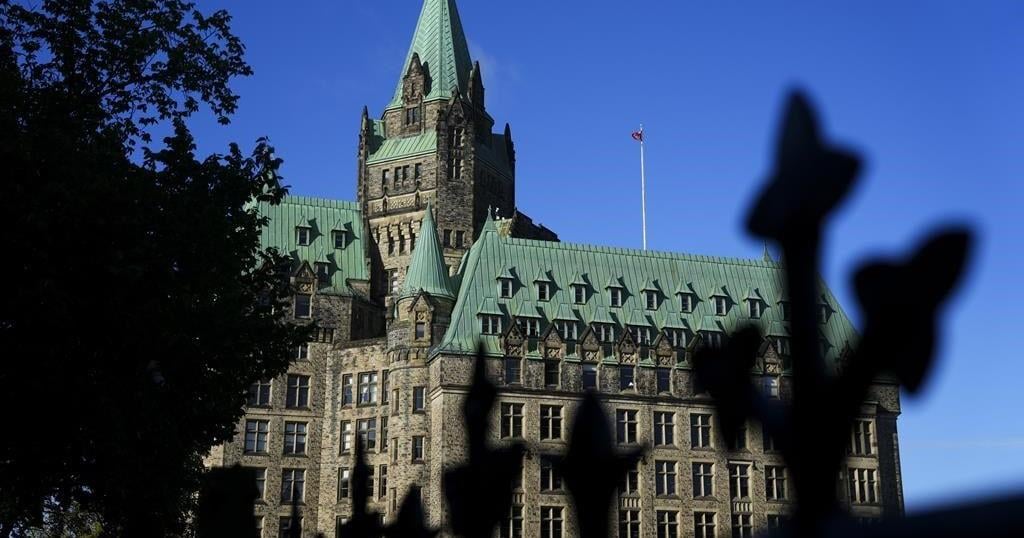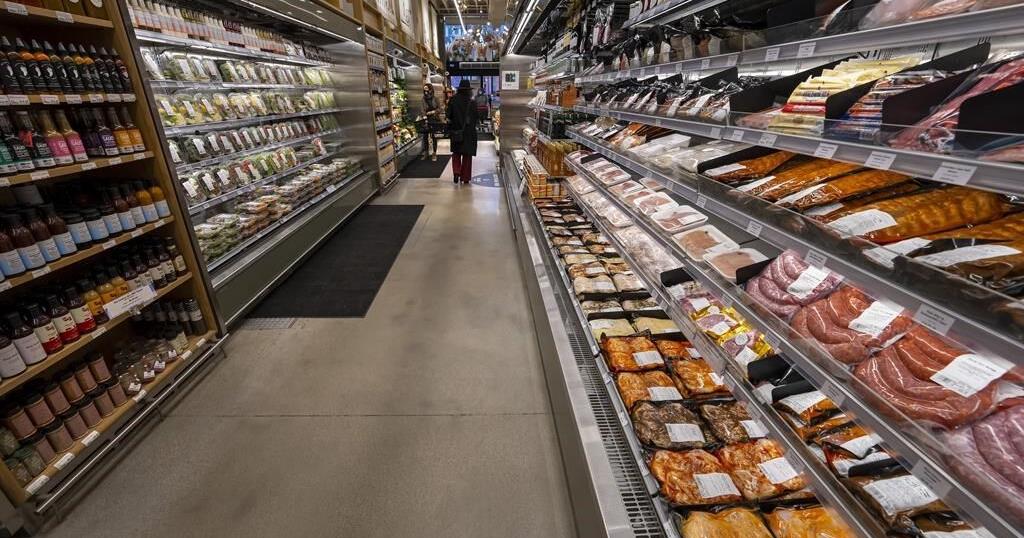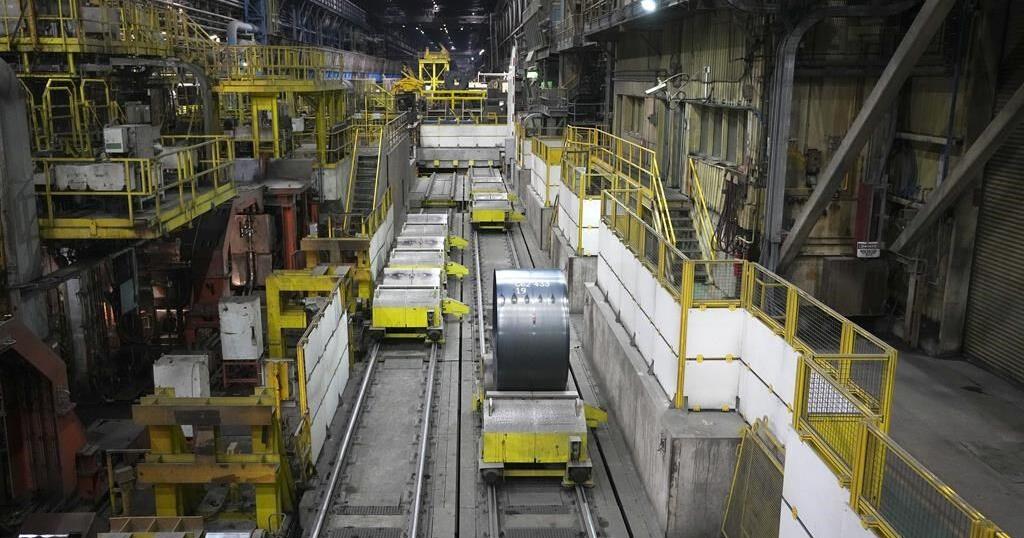President Biden has defined “Bidenomics” as encompassing almost everything good in the U.S. economy — falling unemployment, robust wage growth, new small business creation. And he’s planning to make the concept central to his bid for a second term.
Economy
5 pillars of Biden’s economic policy and how effective they’ve been

“Bidenomics is just another way of saying, ‘Restore the American Dream,’” the president said in a recent address.
Republicans have defined the term in the almost the exact opposite way. Former president Donald Trump has called Bidenomics “total economic surrender to China and other foreign countries.” House Speaker Kevin McCarthy (R-Calif.) calls it “blind faith in government spending and regulations.”
Beyond the partisan talking points, how has “Bidenomics” changed the U.S. economy?
Since taking office, the president has pushed through dozens of changes and personnel appointments that have upended everything from how workers unionize to how large corporations merge. Biden and his aides have sought to revive domestic manufacturing through a clean energy boom, while also trying — with mixed success — to expand the federal safety net.
Biden’s advisers say the president wants an attempt to move beyond the “trickle-down economics” that defined the last four decades in Washington. Biden frequently says past administrations focused on tax breaks for rich people and corporations, but that he aims instead for “growing the economy from the bottom up and middle out.”
The underlying idea is that new government investment “crowds in” additional investments from private companies, a break from past belief that constraining the public sector would free the private sector to grow more. The result is a federal government that intervenes directly much more than it’s done in decades — to boost unions, block corporate monopolies, and spur economic and industrial growth, among other goals.
“The idea of trickle-down [economics] is if the public sector stops investing — if it just disinvests in our public infrastructure — the private sector will come in and make up the difference,” Jared Bernstein, the chair of the White House Council of Economic Advisers, told Washington Post Live last month. “Joe Biden knows that’s always been wrong, and that, in fact, it’s backward.”
Republicans see “Bidenomics” not as a coherent doctrine, but a collection of sometimes contradictory policies designed to please various interest groups in the Democratic coalition. Critics in both parties have blamed Biden’s attempts to spur growth for exacerbating the highest inflation rates in four decades, and courts have repeatedly blocked his attempts to increase competition among corporate giants. Even to his allies, the execution of Biden’s overarching vision has been, at times, uneven and incomplete.
“Bidenomics is much less a coherent approach to economic policy and much more a grab bag of subsidies designed to advance key interests of the Democratic Party coalition,” said Michael Strain, an economist at the American Enterprise Institute, a center-right think tank.
Here are five key parts of Bidenomics — and how they’ve fared over the president’s first two years in office.
Run the economy hot
Biden’s first major economic act was to sign the American Rescue Plan, a $1.9 trillion stimulus aimed at pushing past the recession caused by the pandemic. Determined to avoid the sluggish growth that characterized the recovery from the Great Recession under President Barack Obama, Biden argued that “the biggest risk is not going too big … it’s if we go too small.”
The result, in part, was the fastest-growing economy in decades. The nation’s gross domestic product surged by roughly 6 percent — a level not seen since the 1980s — as the unemployment rate plummeted and the number of new small businesses soared. The president is fond of emphasizing that the United States has had the fastest recovery among the Group of Seven industrialized Western economies, which he and many economists attribute to the rescue plan. And growth has powered on for two years, including 2023 so far.
But economists are still debating how the rescue plan contributed to inflation. Price increases have proven perhaps Biden’s central political liability, even though Russia’s invasion of Ukraine and supply chain snarls — two factors largely beyond the president’s control — exacerbated the crisis. And although inflation has eased recently, voters still rank it as a top concern.

Economy
PBO projects deficit exceeded Liberals’ $40B pledge, economy to rebound in 2025

OTTAWA – The parliamentary budget officer says the federal government likely failed to keep its deficit below its promised $40 billion cap in the last fiscal year.
However the PBO also projects in its latest economic and fiscal outlook today that weak economic growth this year will begin to rebound in 2025.
The budget watchdog estimates in its report that the federal government posted a $46.8 billion deficit for the 2023-24 fiscal year.
Finance Minister Chrystia Freeland pledged a year ago to keep the deficit capped at $40 billion and in her spring budget said the deficit for 2023-24 stayed in line with that promise.
The final tally of the last year’s deficit will be confirmed when the government publishes its annual public accounts report this fall.
The PBO says economic growth will remain tepid this year but will rebound in 2025 as the Bank of Canada’s interest rate cuts stimulate spending and business investment.
This report by The Canadian Press was first published Oct. 17, 2024.
The Canadian Press. All rights reserved.
Economy
Statistics Canada says levels of food insecurity rose in 2022

OTTAWA – Statistics Canada says the level of food insecurity increased in 2022 as inflation hit peak levels.
In a report using data from the Canadian community health survey, the agency says 15.6 per cent of households experienced some level of food insecurity in 2022 after being relatively stable from 2017 to 2021.
The reading was up from 9.6 per cent in 2017 and 11.6 per cent in 2018.
Statistics Canada says the prevalence of household food insecurity was slightly lower and stable during the pandemic years as it fell to 8.5 per cent in the fall of 2020 and 9.1 per cent in 2021.
In addition to an increase in the prevalence of food insecurity in 2022, the agency says there was an increase in the severity as more households reported moderate or severe food insecurity.
It also noted an increase in the number of Canadians living in moderately or severely food insecure households was also seen in the Canadian income survey data collected in the first half of 2023.
This report by The Canadian Press was first published Oct 16, 2024.
The Canadian Press. All rights reserved.
Economy
Statistics Canada says manufacturing sales fell 1.3% to $69.4B in August

OTTAWA – Statistics Canada says manufacturing sales in August fell to their lowest level since January 2022 as sales in the primary metal and petroleum and coal product subsectors fell.
The agency says manufacturing sales fell 1.3 per cent to $69.4 billion in August, after rising 1.1 per cent in July.
The drop came as sales in the primary metal subsector dropped 6.4 per cent to $5.3 billion in August, on lower prices and lower volumes.
Sales in the petroleum and coal product subsector fell 3.7 per cent to $7.8 billion in August on lower prices.
Meanwhile, sales of aerospace products and parts rose 7.3 per cent to $2.7 billion in August and wood product sales increased 3.8 per cent to $3.1 billion.
Overall manufacturing sales in constant dollars fell 0.8 per cent in August.
This report by The Canadian Press was first published Oct. 16, 2024.
The Canadian Press. All rights reserved.
-

 Sports16 hours ago
Sports16 hours agoIn The Rings: Curling Canada still looking for Canadian Curling Trials title sponsor
-

 Politics16 hours ago
Politics16 hours agoN.B. election debate: Tory leader forced to defend record on gender policy, housing
-

 News16 hours ago
News16 hours agoAfter hurricane, with no running water, residents organize to meet a basic need
-

 News16 hours ago
News16 hours agoAlberta government shifts continuing care from Health to Seniors Ministry
-

 News16 hours ago
News16 hours agoBuhai, Green and Shin lead in South Korea after 8-under 64s in first round
-

 News16 hours ago
News16 hours agoManitoba government halts school building plan, says other methods will be found
-

 Sports16 hours ago
Sports16 hours agoMaple Leafs winger Bobby McMann finding game after opening-night scratch
-

 News16 hours ago
News16 hours ago‘Significant overreach’: Ontario municipalities slam province over bike lane rules





















